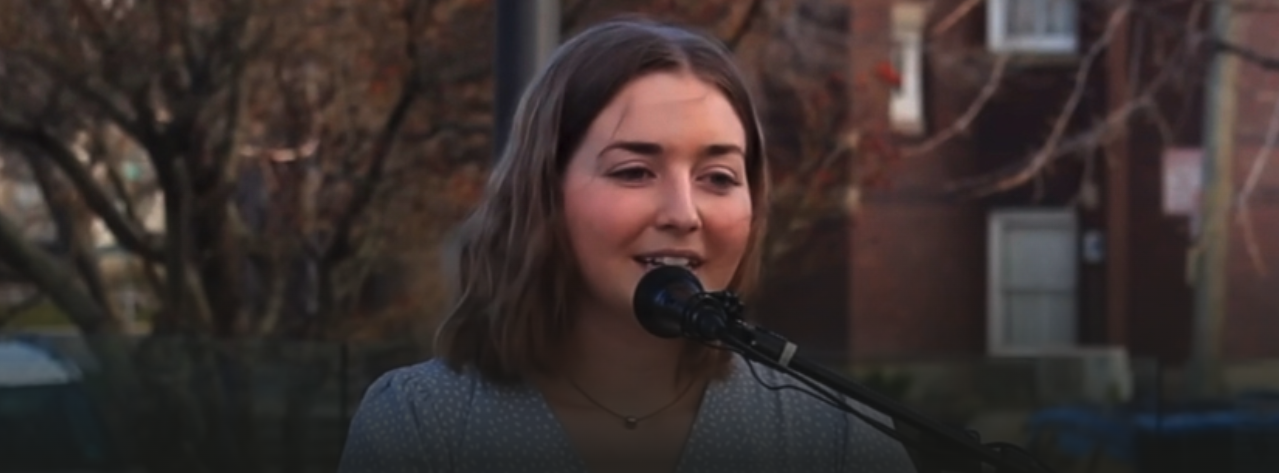
Sophie Hansen received her first liver transplant as a teenager, an experience that drives her passion for medical research and patient care. Now a senior in the School of Biological Sciences, Hansen navigates the challenges that come with having a chronic illness as a college student.
National Donor Day on Feb. 14 recognizes the impact of families and individuals who donate an organ to save or improve a life. Hansen has received two liver transplants, and the compassion and support she received helped get her through the toughest moments of her life.
“The impact physicians have on patients goes far beyond physical healing. My whole transplant team encouraged my interest in medicine, which motivated me to do well in school through my medical challenges,” she said. “Many of my doctors have continued to be mentors for me—I’m incredibly lucky to have their guidance through my academic and career journey.”

As a child in Bountiful, Utah, Hansen was diagnosed with a rare and progressive liver disease called Primary Sclerosing Cholangitis (PSC) and by age 11, the disease had progressed to the point that she needed a liver transplant. She was on the transplant waitlist for four years before receiving her first liver. The long waiting period is not unique to Hansen’s story, as the average wait time for a kidney transplant in the United States is roughly five years. For the next few years, Hansen was able to enjoy big milestones, such as high school graduation and starting college, without any health complications.
“This disease is lifelong and can be unpredictable, but I’ve learned to use the time that I feel good wisely and give myself grace when I need it,” Hansen shared. “I do homework in hospitals more often than I’d like, and I wish I didn’t know that the infusion center has comfy study chairs and good snacks, but it’s a part of my life that I’ve accepted and, in a way, learned to embrace it.”
As a biology major, Hansen has applied knowledge learned from classes like genetics, cell biology and human physiology to her disease. In 2023, she was hired as a research assistant at Primary Children’s Pediatric Organ Transplant Clinic to work alongside some of her medical team. She’s traveled to numerous symposia to present her findings and spent a semester abroad working on research at the University of Copenhagen. In December 2024, she published her first research paper with the doctors who helped her through her second transplant.

“It’s such a surreal, full-circle experience. I got to scrub in the operation room during a liver transplant with the surgeon who did my transplant,” she said. “It’s truly an honor to help kids going through the same thing I did, help them feel less alone.”
She does her best to advocate for those in need of a lifesaving organ donation by sharing her story at national events that highlight the need for organ donors. A major challenge for patients is finding an organ that won’t elicit a major rejection response by the recipient’s immune system. The bigger the pool of donors, the better the outcomes for patients in need of a transplant.
“Patient care is where the heart of medicine is and without research and advancements in treatment, improving patient care will never happen,” she said.
Hansen’s journey has been transformative, informing her future, the way she lives life, and how she gives back to the organ donation community. But it’s not easy— she was on a path to graduate in spring 2025, but her recent transplant and other health setbacks have put this on pause.
“By December 2023, I had a series of setbacks that made it clear my body was once again under attack. I went through transplant evaluation during finals week (my junior year at the U), was listed on the donor registry in January 2024, and received my second liver transplant on Feb. 13, 2024.”
Hansen’s optimism, resilience and passion for learning put things into perspective. She wants U students to know, “You can do everything on your own time!”
Follow Hansen’s journey on her Instagram @sophie._.hansen, and learn more about organ donation at:
